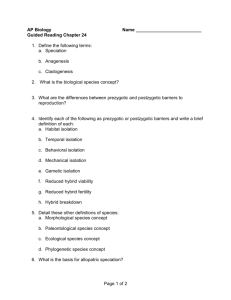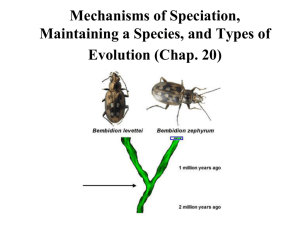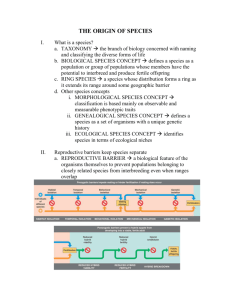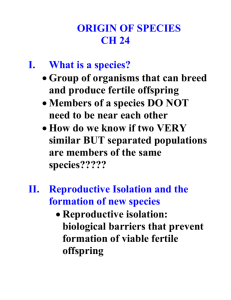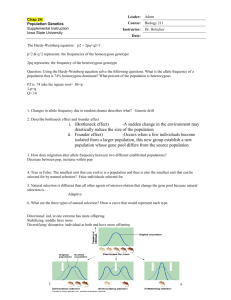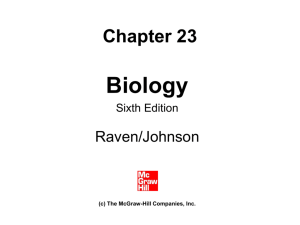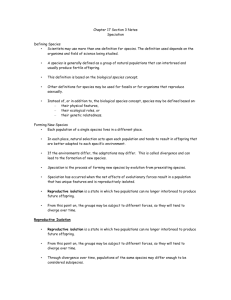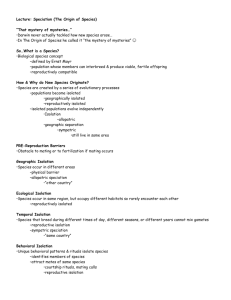Chapter 14: The Origin of Species 14.1 Distinguish between
advertisement
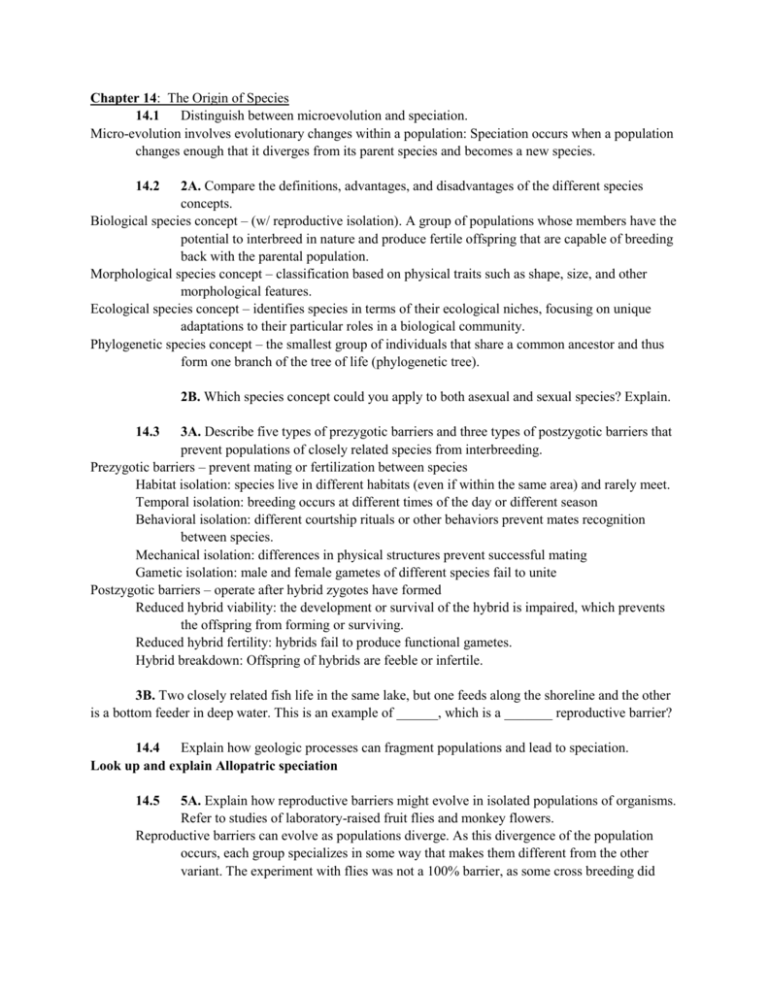
Chapter 14: The Origin of Species 14.1 Distinguish between microevolution and speciation. Micro-evolution involves evolutionary changes within a population: Speciation occurs when a population changes enough that it diverges from its parent species and becomes a new species. 14.2 2A. Compare the definitions, advantages, and disadvantages of the different species concepts. Biological species concept – (w/ reproductive isolation). A group of populations whose members have the potential to interbreed in nature and produce fertile offspring that are capable of breeding back with the parental population. Morphological species concept – classification based on physical traits such as shape, size, and other morphological features. Ecological species concept – identifies species in terms of their ecological niches, focusing on unique adaptations to their particular roles in a biological community. Phylogenetic species concept – the smallest group of individuals that share a common ancestor and thus form one branch of the tree of life (phylogenetic tree). 2B. Which species concept could you apply to both asexual and sexual species? Explain. 14.3 3A. Describe five types of prezygotic barriers and three types of postzygotic barriers that prevent populations of closely related species from interbreeding. Prezygotic barriers – prevent mating or fertilization between species Habitat isolation: species live in different habitats (even if within the same area) and rarely meet. Temporal isolation: breeding occurs at different times of the day or different season Behavioral isolation: different courtship rituals or other behaviors prevent mates recognition between species. Mechanical isolation: differences in physical structures prevent successful mating Gametic isolation: male and female gametes of different species fail to unite Postzygotic barriers – operate after hybrid zygotes have formed Reduced hybrid viability: the development or survival of the hybrid is impaired, which prevents the offspring from forming or surviving. Reduced hybrid fertility: hybrids fail to produce functional gametes. Hybrid breakdown: Offspring of hybrids are feeble or infertile. 3B. Two closely related fish life in the same lake, but one feeds along the shoreline and the other is a bottom feeder in deep water. This is an example of ______, which is a _______ reproductive barrier? 14.4 Explain how geologic processes can fragment populations and lead to speciation. Look up and explain Allopatric speciation 14.5 5A. Explain how reproductive barriers might evolve in isolated populations of organisms. Refer to studies of laboratory-raised fruit flies and monkey flowers. Reproductive barriers can evolve as populations diverge. As this divergence of the population occurs, each group specializes in some way that makes them different from the other variant. The experiment with flies was not a 100% barrier, as some cross breeding did occur even after 40 generations of isolation and breeding towards specific niches (different food sources). 5B. Females finches have been known to respond to the songs of the males from their island, but ignore the songs from males on other islands. How would you interpret these findings? Behavioral isolations may be able create the time needed for reproductive barriers to develop. 14.6 14.7 14.8 14.9 14.10 14.11 Explain how sympatric speciation can occur, noting examples in plants and animals. Explain why polyploidy is important to modern agriculture. Explain how modern wheat evolved. Describe the circumstances that led to the adaptive radiation of the Galápagos finches. Describe the discoveries made by Peter and Rosemary Grant in their work with Galápagos finches. Explain how hybrid zones are useful in the study of reproductive isolation. Compare the gradual model and the punctuated equilibrium model of evolution. Explain how each model applies to the fossil record.


